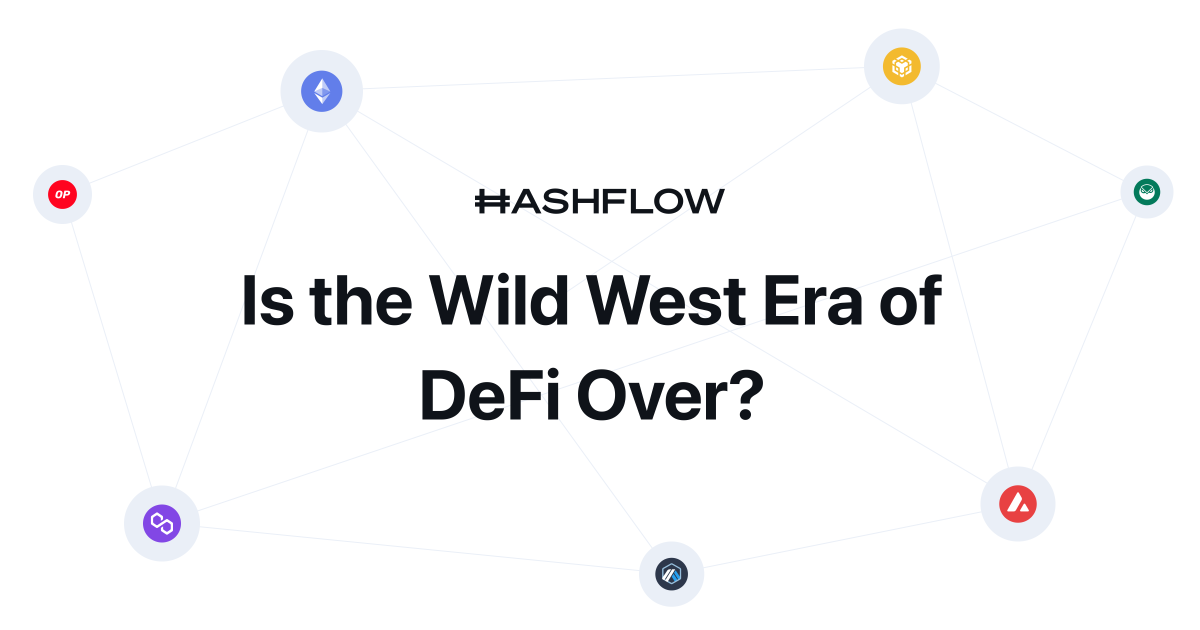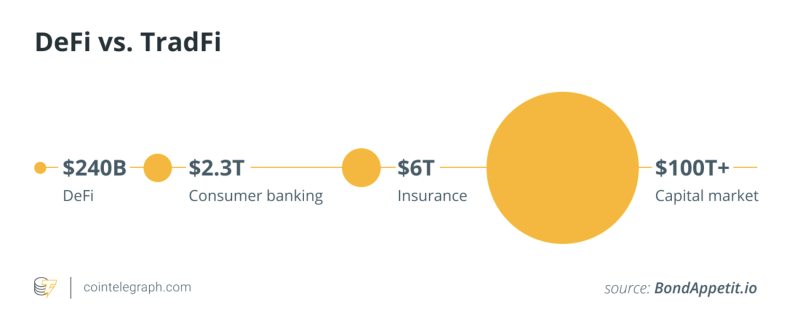Is The Wild West Era of DeFi Over?


We’ll look back at 2020 and 2021 as the frontier era of DeFi. Much like the Gold Rush of 1849, the DeFi token rush of the early 20’s was a wild west. The opportunity-seeking spirits of the California Forty-niners, reincarnated as DeFi degens, scoured Crypto Twitter daily for new and untapped opportunities to strike gold in the metaverse.
As with any sudden burst of financial opportunity, this brought out both the good and bad inherent in the human spirit. The good, we all know – entrepreneurs set up shop in this new world, made life-changing riches, but also laid the foundation for on-chain financial services. This frenzy cemented major projects like Maker, Compound, Uniswap, and also gave birth to Hashflow.
That said, the dark side of the frontier also presented itself. Con men looking to make a quick buck emerged from the woodwork to trick naive speculators and steal their funds. Over $10 billion was lost to scams in 2021, with $670 million lost in Q2 2022 alone. For those accustomed to gold rushes, this was acceptable, and part and parcel of the bargain – manias are truly equal opportunity.
However, this line of thinking doesn’t satisfy regulators who are tasked with consumer protection. While they may see promise in this new technology, they first need to ensure that it doesn’t pose a danger to the growing number of everyday people participating in DeFi. The regulators are here, whether we like it or not.
Stablecoins: “Same Risk, Same Regulation”
Stablecoins have become the hotbed for regulatory scrutiny since the collapse of Terra’s UST. Just over the last week, finance ministers and central bank governors across the G20 nations affirmed the need for cross-border stablecoin regulation, while regulatory bodies such as the International Organization of Securities Commissions (IOSCO) have issued final guidance that calls for stablecoins to follow international standards for payments and settlement systems.
While the public dialogue around stablecoins continues to develop, what comes after that will be even more interesting. The regulators’ approach to stablecoins will be a harbinger for regulation of more complex crypto-assets and financial primitives – aka DeFi.
The burgeoning DeFi industry, which has enjoyed a laissez-faire environment since 2020, will have to undergo scrutiny and begin adapting to regulation.
What Will DeFi Regulations Look Like?
At this point, it is tough to say what the shape or timing of laws might be. The challenge with existing frameworks is that they exist to address problems inherent in centralized finance. It’s relatively easy to observe centralized actors and determine whether they ran afoul of laws. But who is at fault if a smart contract has a bug, or an oracle misreports a price?
U.S. Senators have recently proposed the Lummis-Gillibrand bill in an attempt to develop a new regulatory framework for the industry, starting with the centralized exchanges. While decentralized finance was not explicitly articulated in the bill, the framework’s catch-all language suggests that DeFi could be roped into the same umbrella of oversight in the future.
Where we can start are the problems regulators are keen to address. The SEC has shared a statement on DeFi that calls out “two specific structural problems that the DeFi community needs to address” — a) the lack of transparency, and b) pseudonymity.
This may not sit well with crypto-natives, who may scoff at the idea of KYC, but what this statement is fundamentally advocating for is:
- Giving retail investors an even playing field
- Making the market function better
- Prevent bad guys from getting financing
At their core, these are good goals to strive for. In fact, DeFi natives who support these goals would be surprised at how well they’re aligned with much of the regulatory intent.
We should want DeFi markets to become friendlier, more liquid, less reflexive, and free of manipulation. But we also want to achieve these goals without compromising our ideals of fewer rent-seekers, open access to financial services, and censorship resistance.
To retain the value propositions of DeFi, projects should be proactive in meeting regulatory guidelines when building their products. For example, one simple way of addressing regulators’ concerns around AML is to gate usage of the product by flagged or sanctioned wallets.
DeFi projects who are proactive can ensure that at the very least, they would have taken the appropriate posture ahead of regulatory scrutiny. By demonstrating good faith, DeFi can go a long way in helping regulators see more of the good than the bad.
The Next Evolution of DeFi
While changing and adapting existing DeFi apps will help assuage regulators, what will change the narrative is bringing CeFi into the fold. As long as DeFi is a fringe sector in the financial system and decoupled from the existing players and their influence, regulators will be able to magnify the unsavory aspects of crypto.
One of the key prerequisites for the large-scale institutional adoption of DeFi is its ability to offer deep pools of liquidity. However, the liquidity sources themselves must also be auditable so as to ensure that LPs are not bad actors and do not otherwise trigger any red flags from a regulatory or compliance perspective. Most current architectures are not optimized for this, but products like Fireblocks, Akemi, and Aave Arc all target the institutional audience and include features like KYC and AML checks to reduce risk, with others poised to join in.
Take Hashflow for example – a decentralized exchange that connects institutional market makers to traders using a novel request-for-quote (RFQ) model. This RFQ model allows market makers to price assets using off-chain pricing functions instead of the constant product pricing function commonly used by AMMs.
By moving pricing functions off-chain, traders can benefit from better prices, zero slippage, and MEV-protected trades. Hashflow’s RFQ model will also allow for the trading of non-spot assets such as options and derivatives (in allowed jurisdictions) in the near future.
The model also uniquely positions Hashflow to implement the type of KYC and AML controls that institutional capital requires by virtue of its RFQ model. By controlling which market makers are able to participate on its platform as well as allowing users to trade only with known or whitelisted counterparties, Hashflow can offer a fully KYC and AML compliant trading experience for institutional customers.
This represents the next evolution of DeFi, where existing products become compliant for the regulatorily conservative institutions. In turn, institutions become more deeply embedded in the DeFi ecosystem, potentially creating a much larger addressable market with the influx of institutional capital from the trillion-dollar traditional capital markets. Once a critical mass of institutions enter the fray, regulators will be more likely to treat DeFi as new rails, with the potential for bringing innovation to both new and existing players alike.
While the frontier days are over, the smart DeFi players will adapt to the new regulatory landscape and target a much larger addressable market in the future. Others will resist oversight and tempt fate for a few more quick wins, but the smart ones will read the tea leaves and adjust, getting ready to usher in the next evolution of DeFi.
To learn more about Hashflow, visit hashflow.com or follow Hashflow on Twitter.
This post is commissioned by Hashflow and does not serve as a testimonial or endorsement by The Block. This post is for informational purposes only and should not be relied upon as a basis for investment, tax, legal or other advice. You should conduct your own research and consult independent counsel and advisors on the matters discussed within this post. Past performance of any asset is not indicative of future results.
© 2025 The Block. All Rights Reserved. This article is provided for informational purposes only. It is not offered or intended to be used as legal, tax, investment, financial, or other advice.





